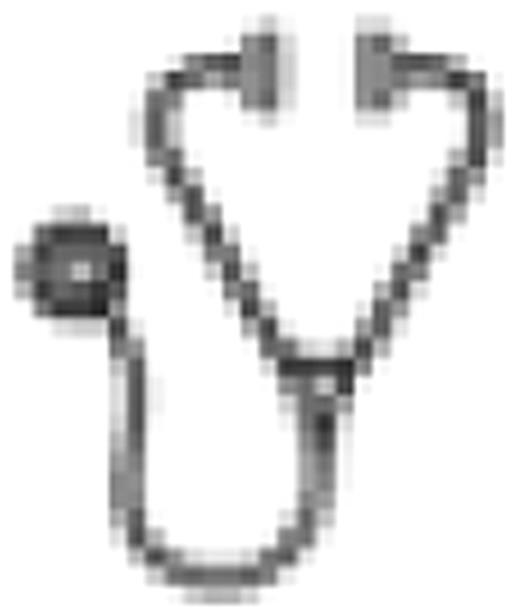Abstract
Abstract 79
The Children with Down's Syndrome Study (CDSS; www.cdss.org.uk) is a unique observational study following a population-based cohort of children with Down's syndrome (DS) from birth onwards. Here we present the initial set of neonatal full blood count results - demonstrating that haematological values in DS neonates differ markedly from those of the general neonatal population; and providing, for the first time, DS specific reference ranges for haematological parameters for immediate clinical use.
Recruitment to the population based CDSS opened in May 2006 and is ongoing. At entry, a blood sample taken in EDTA is sent to a designated laboratory with full CPA (UK) accreditation and processed using a Sysmex XE2100 or Advia 2120 according to a standard operating procedure. Clinical and demographic details, including date of birth, gestational age and birth weight are collected routinely. Of the 229 children recruited with appropriate samples, 197 are included in the analysis presented here: 32 were excluded because the sample was after 28 days of age; had a delay in processing; or had no result. Regression analyses considered effects of age at sampling, days until processing, sex, and source of sample. Gestational age and birth weight were examined in children sampled within 3 days of birth.
There were 109 boys and 88 girls. Median age at sampling was 3 days (IQR: 1–7). Median gestational age was 39 weeks (IQR: 37–39) and median birth weight was 3.0 kg (IQR: 2.4–3.4). The DS neonates had a similar RCC, but higher HB, HCT and MCV, when compared with standards for the general neonatal population: RCC 5.4 ± 0.82 x1012/l; HB 20.0 ± 3.3 g/dl with HCT 0.62 ± 0.1%, and MCV 115.5 ± 9.0 fl. By conventional standards, 43% of DS neonates would be considered to be polycythaemic (HCT>65%), and 76% macrocytic (MCV>110 fl). WCC was 13.9 ± 8.4 x109/l with differential analysis (on a subset of 100 children with suitable samples) showing neutrophils 6.4 ± 5.3 x109/l; lymphocytes 3.4 ± 2.0 x109/l; monocytes 0.97 ± 0.55 x109/l; eosinophils 0.22 ± 0.32 x109/l; and basophils 0.20 ± 0.19 x109/l. In 41% cases monocytes were >1.0 x109/l. The overall mean platelet count was 161 ± 89 x109/l. Thrombocytopenia was most common in the first week of life: 63% having platelets < 150 x109/l. Only 8% of children sampled in their fourth week of life had a platelet count < 150 x109/l. Mean MPV was 11.8 ± 1.0 fl which is greater than the 95th percentile MPV for a general neonatal population. HB, RCC, HCT, MCV, RDW-CV, nucleated red blood cells, WCC, neutrophils and lymphocytes all fell with each increasing day of age. These parameters did not vary with sex or source of sample. Platelet and monocyte number both increased slightly with increasing birth weight, while HB and RCC fell. HB, HCT, RCC and neutrophils increased with each week of increasing gestational age, while the platelet count fell.
The haematological profile of DS neonates appears to be distinct from that of the general neonatal population reflecting altered trilineage haematopoiesis. The most striking features are the increased HB, HCT and MCV - with a preserved RCC; monocytosis; and thrombocytopenia with increased MPV. These features, particularly large haemoglobin-rich erythrocytes and thrombocytopenia, are associated with fetal haematopoiesis, suggesting that the switch to adult haematopoiesis may be delayed in DS. For example, the mean MCV here is comparable with that at 30 weeks gestation for the general population. Interestingly, the neutrophil count appears lower than the general population, although it follows a similar postnatal pattern: falling rapidly over the first few days before plateauing from day 10. Many neonatal units incorporate the neutrophil count in algorithms to indicate the likelihood of sepsis; these may need to be revised for DS neonates. Fetal thrombocytopenia has been described previously in DS. It is clear from this work that the platelet count increases with advancing postnatal age, so that in contrast to other causes of neonatal thrombocytopenia, a well DS neonate with thrombocytopenia does not require additional investigation. This work provides a much needed evidence-base for clinical practice: the predictive percentile charts indicating the expected range by age for the neonatal period and illustrating the natural history.
No relevant conflicts of interest to declare.

This icon denotes an abstract that is clinically relevant.
Author notes
Asterisk with author names denotes non-ASH members.

This feature is available to Subscribers Only
Sign In or Create an Account Close Modal